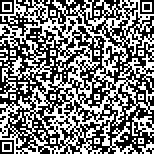| 引用本文: | 王夏影,周柏先,曾少枫,洪诗杰,李思婷,陈君丽,陈杰燕,杨帆.3D打印氨茶碱分剂量片的辅料相容性研究[J].中国现代应用药学,2022,39(22):2935-2944. |
| WANG Xiaying,ZHOU Baixian,ZENG Shaofeng,HONG Shijie,LI Siting,CHEN Junli,CHEN Jieyan,YANG Fan.Compatibility Study of Excipients for 3D Printed Aminophylline Split-dose Tablets[J].Chin J Mod Appl Pharm(中国现代应用药学),2022,39(22):2935-2944. |
|
| |
|
|
| 本文已被:浏览 1403次 下载 931次 |

码上扫一扫! |
|
|
| 3D打印氨茶碱分剂量片的辅料相容性研究 |
|
王夏影1, 周柏先1, 曾少枫1, 洪诗杰1, 李思婷1, 陈君丽1, 陈杰燕2, 杨帆1,3
|
|
1.广东药科大学新药研发中心, 广东省药物新剂型重点实验室和广东省局部精准药物递药制剂工程技术研究中心, 广州 510006;2.广州市花都区人民医院, 广州 510810;3.广东药科大学附属第一医院, 临床药学重点专科, 广州 510006
|
|
| 摘要: |
| 目的 制备性质稳定的3D打印氨茶碱分剂量片,通过考察其理化性质,对药物与辅料的相容性进行研究。方法 制备不同处方和工艺的3D打印氨茶碱分剂量片,根据中国药典2020年版方法进行检测,初步确定影响药物稳定性的因素。采用差式扫描量热法(differential scanning calorimetry,DSC)、X射线粉末衍射(X-ray powder diffraction,XRPD)、傅里叶变换红外光谱(Fourier transform infrared spectroscopy,FTIR)、HPLC等方法对3D打印氨茶碱分剂量片进行分析,揭示药物与辅料的相容性以及影响药物稳定性的机制。根据研究结果,制备性质稳定的3D打印氨茶碱分剂量片,并考察其质量。结果 根据中国药典2020年版方法检测无水茶碱和乙二胺含量,初步确定影响药物稳定性的因素为填充剂的添加。添加MCC或乳糖的2种3D打印氨茶碱分剂量片在DSC、XRPD检测均有药物特征峰的消失;FTIR检测结果表明反应产物的官能团吸收峰与药物的有重叠,使特征谱带变宽;HPLC在检测无水茶碱时有小的杂质峰出现,说明MCC中存在少量的糖类降解产物,而乳糖不适合作氨茶碱的辅料,会影响药物的稳定性,因此3D打印氨茶碱分剂量片处方采用非糖类无水磷酸氢钙做填充剂,并根据临床需求规格设计药物处方并打印药片。所得片剂的药物含量及溶出度均符合中国药典2020年版规定,在DSC、FTIR、XRPD图谱中,药物特征峰均未受辅料影响,药物与辅料相容性良好。结论 3D打印药品分剂量片添加辅料时,需考察药物与辅料的相容性,MCC中微量杂质还原糖会与氨茶碱中乙二胺发生Maillard反应,在制备3D打印分剂量片时,需选择不影响药物稳定性的辅料。 |
| 关键词: 3D打印|氨茶碱|分剂量|辅料相容性 |
| DOI:10.13748/j.cnki.issn1007-7693.2022.22.006 |
| 分类号:R944.4 |
| 基金项目:广东省科技创新战略专项资金(“攀登计划”专项资金)项目(pdjh2022b0265);广州市卫生健康科技一般引导项目(20221A010080);广东省普通高校重点领域专项(2019KZDZX1019) |
|
| Compatibility Study of Excipients for 3D Printed Aminophylline Split-dose Tablets |
|
WANG Xiaying1, ZHOU Baixian1, ZENG Shaofeng1, HONG Shijie1, LI Siting1, CHEN Junli1, CHEN Jieyan2, YANG Fan1,3
|
|
1.The Center for Drug Research and Development, Guangdong Pharmaceutical University, Guangdong Provincial Key Laboratory of Advanced Drug Delivery Systems and Guangdong Provincial Engineering Center of Topical Precise Drug Delivery System, Guangzhou 510006, China;2.Huadu District People's Hospital of Guangzhou, Guangzhou 510810, China;3.Key Specialty of Clinical Pharmacy, The First Affiliated Hospital of Guangdong Pharmaceutical University, Guangzhou 510006, China
|
| Abstract: |
| OBJECTIVE To prepare 3D printed aminophylline split-dose tablets with stable properties, the compatibility of drug and excipients was investigated by examining their physicochemical properties. METHODS 3D printed aminophylline split-dose tablets with different prescriptions and processes were first prepared and tested according to the method in Chinese Pharmacopeia 2020 Edition to determine the factors affecting the stability of the drug. Then the 3D printed aminophylline split-dose tablets were analyzed by differential scanning calorimetry(DSC), X-ray powder diffraction(XRPD), Fourier transform infrared spectroscopy(FTIR), and HPLC to reveal the compatibility of drug and excipients and the mechanism affecting the stability of the drug. Based on the results of the study, 3D printed aminophylline split-dose tablets with stable properties were prepared and their quality was investigated. RESULTS According to the method of Chinese Pharmacopoeia 2020 edition, the content of anhydrous theophylline and ethylenediamine was preliminarily determined, and the factors affecting the stability of the drug were the addition of filler. The two 3D printed aminophylline dispensed tablets with MCC or lactose were detected by DSC and XRPD with the disappearance of the characteristic peaks of the drug; FTIR showed that the absorption peaks of the functional groups of the reaction products overlapped with those of the drug, which widened the characteristic bands; HPLC showed small impurity peaks in the detection of anhydrous theophylline, indicating the presence of a small amount of sugar degradation products in MCC, while lactose was not suitable for the determination of aminophylline. Therefore, the prescription of 3D printed aminophylline divided-dose tablets was filled with non-sugar anhydrous calcium hydrogen phosphate, the drug prescription was designed and the tablets were printed according to the clinical requirement specifications. The drug content and dissolution degree of the obtained tablets were by the Chinese Pharmacopoeia 2020 edition, and the drug characteristic peaks in DSC, FTIR, and XRPD spectra were not affected by the excipients, and the drug was well compatible with the excipients. CONCLUSION When adding excipients to 3D printed drug-dosed tablets, it is necessary to investigate the compatibility of the drug and the excipients. A small amount of impurity-reducing sugar in MCC will undergo a Maillard reaction with ethylenediamine in aminophylline. When preparing 3D printed dosed tablets, it is necessary to choose excipients that do not affect the stability of the drug. |
| Key words: 3D printing|aminophylline|split dose|excipient compatibility |
|
|
|
|
